18 June
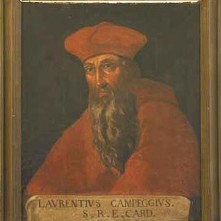
Cardinal Campeggio who presided over the Legatine Court
1529 – Opening of the Legatine Court at Blackfriars to hear the case for the proposed annulment of Henry VIII's marriage to Catherine of Aragon.
1546 – Anne Askew was arraigned at London's Guildhall for heresy, along with Nicholas Shaxton, Nicholas White and John Hadlam (Adlams or Adams). She was sentenced to be burned at the stake.
1558 – Proving of the will of Robert Recorde, Welsh mathematician and physician. His date of death is not known, but is thought to have been mid June 1558. He is known for introducing the “equal to” sign, i.e. “=”. He published several mathematical works. Click here to read more about him.
1588 – Death of Robert Crowley, Protestant printer, author, poet and Church of England clergyman. He was buried in the chancel of St Giles Cripplegate under the same stone as his great friend martyrologist, John Foxe.
1592 – Death of Francis Wyndham, Judge, at the Committee House, St Peter Mancroft, Norwich. His trials included the treason trials of John Somerville and William Parry in the 1580s, and his legal knowledge led to him being approached for advice on Mary, Queen of Scots.
1616 – Death of Thomas Bilson, Bishop of Winchester, at Westminster. He was buried at Westminster Abbey.
19 June
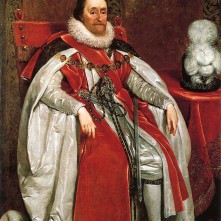
James I of England (VI of Scotland)
1502 – The Treaty of Antwerp was signed between Henry VII and Emperor Maximilian I at Antwerp. Henry VII promised a payment of £10,000 for aid against the Turks in exchange for Maximilian's promise to banish Yorkist rebels from his territories.
1535 - Sebastian Newdigate, William Exmew and Humphrey Middlemore, monks of the Carthusian Order of London Charterhouse, were hanged, drawn and quartered at Tyburn. Their crime: refusing to accept King Henry VIII as the Supreme Head of the Church. Click here for more information on the Carthusian Martyrs.
1566 – Birth of James VI and I, King of Scotland, England and Ireland, at Edinburgh Castle in Scotland. James was the only son of Mary, Queen of Scots, and Henry Stuart (Stewart), Lord Darnley. James became James VI of Scotland when his mother was forced to abdicate 24th July 1567, and he became James I of England on the death of Elizabeth I, 24th March 1603.
1573 – Execution of Thomas Woodhouse, Jesuit priest and martyr, at Tyburn. He was the first priest to be executed in Elizabeth I's reign. Woodhouse was beatified in December 1886 by Pope Leo XIII.
1616 – Death of Henry Robinson, Bishop of Carlisle, at his home, Rose Castle in Carlisle. He died of the plague. Robinson was buried in Carlisle Cathedral.
20 June
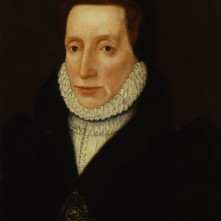
Margaret Douglas
1540 – Anne of Cleves complained to her brother's ambassador, Karl Harst, about Henry VIII's attraction to Catherine Howard.
1560 – Death of Francis Hastings, 2nd Earl of Huntingdon, at Ashby-de-la-Zouch. Francis was married to Katherine Pole, daughter of Henry Pole, Baron Montagu, but was fortunate to survive the fall of the Poles in 1538. His son, Henry, was educated with Henry VIII's son, the future Edward VI, who made Hastings a member of his Privy Council in 1550. Hastings and his son were imprisoned in the Tower by Mary I for their support of Lady Jane Grey in 1553, but were pardoned a few months later. He served Edward VI, Mary I and Elizabeth I as Lord Lieutenant of Leicestershire.
1565 – Margaret Douglas sent to the Tower of London by Elizabeth I after the announcement of the betrothal of Mary, Queen of Scots and Lord Darnley, Margaret's son. She was released after Darnley's murder in February 1567.
1567 - The discovery of the Casket Letters. Click here to read more about these letters.
1568 – Death of Armagil Waad (Wade), Chief Clerk of the Privy Council and member of Parliament during Edward VI's reign, at Belsize Park, Hampstead. He was buried in Hampstead Church. Waad lost his office and his seat in Parliament in Mary I's reign.
1584 – Hanging of Dermot O'Hurley, Catholic Archbishop of Carshel and martyr, at Hoggen's Green, just outside Dublin. He had been linked with the Roman Inquisition and was tortured by having his feet out in tin boots and then put in front of a fire. He was beatified 27th September 1992.
1585 – Death of Henry Percy, 8th Earl of Northumberland, on the night of the 20th/21st June in the Tower of London. Northumberland had, allegedly, shot himself through the heart, although it was rumoured that he was murdered by Sir Christopher Hatton on the orders of Elizabeth I's government. Northumberland had been imprisoned in the Tower in January 1584 for his Catholic beliefs and his involvement in plots to do with Mary, Queen of Scots. He was laid to rest in the chapel of St Peter ad Vincula at the Tower.
1595 – Burning of Walter Marsh, spy and Protestant martyr, in Rome's Campo dei Fiori. Before he was burned, he had his hands and tongue cut off. He had been accused of spying on Catholics for Elizabeth I, and of committing offences against Catholics.
21 June
1494 – Birth of George Cavendish, Cardinal Wolsey's Gentleman Usher. Cavendish wrote a biography of Wolsey, “The Life and Death of Cardinal Wolsey”, and a collection of tragic poems, “Metrical Visions”. His poetry and biography are widely used by Tudor historians as primary sources.
1529 – Death of John Skelton, poet, clergyman and former tutor to Henry VIII when he was prince, at Westminster. He was buried in St Margaret's, Westminster. His works included “Garlande of Laurell” and “The Boke of Phyllyp Sparowe”.
1553 – Letters patent issued changing Edward VI's heir from his half-sister, Mary, to Lady Jane Grey. Click here to read more.
1596 – Death of Sir John Wingfield, soldier. He was shot in the head after being wounded in the thigh, and being unable to walk, in the attack on Cadiz. He was buried in the Cathedral at Cadiz.
1612 – Death of James Elphinstone, 1st Lord Balmerino, administrator and Judge, at Balmerino. Elphinstone was James VI's secretary of state, but was attainted as a traitor and sentenced to death in 1609 after he tricked the King into signing a letter to the Pope. He escaped death, but was imprisoned until 1609.
22 June
1477 – Birth of Thomas Grey, 2nd Marquis of Dorset, courtier and constable of Warwick Castle and of Kenilworth Castle. He was the third son and heir of Thomas Grey, first Marquis of Dorset, and his wife, Cicely.
1509 - Henry VIII created 26 Knights of the Bath. Click here to read more.
1528 – Death of William Carey, courtier, distant cousin of Henry VIII and husband of Mary Boleyn. He died of sweating sickness, leaving behind his wife and two children, Catherine and Henry.
1535 - John Fisher, Bishop of Rochester, was beheaded on Tower Hill. He was one of the many victims of Henry VIII and was executed for treason, for refusing to take the “Oath of Succession” and accept Henry as the Supreme Head of the Church of England.
1536 - Henry VIII’s eldest daughter, Mary, finally submitted to her father and accepted her father as Supreme Head of the Church in England and the invalidity of her parents' marriage.
1547 – Death of George Lokert (or Lockhart), Dean of Glasgow, logician and theologian. Lokert studied at the University of Paris and was prior of the Collège de Sorbonne.
1557 – Death of Richard Woodman, Protestant martyr. He was burnt at Lewes, in Sussex, with nine other martyrs after he refused to recant.
1559 - Publication of Queen Elizabeth I's Prayer Book - click here.
1599 – Death of Sir William Fitzwilliam, Lord Deputy of Ireland in Elizabeth I's reign, at Milton, Northamptonshire, after a long illness. He was buried at the church of Marham, Norfolk.
23 June
1556 – Baptism of Thomas Hood, mathematician and physician, at St Leonard Eastcheap. His works included the 1590 “The Use of the Celestial Globe in Plano, Set Foorth in Two Hemispheres”, the 1592 “The Use of Both the Globes Celestiall and Terrestriall”, the 1596 “Two Mathematicall Instruments, the Crosse-Staffe and the Jacobs Staffe” and the 1598 “The Making and Use of the Geometricall Instrument called a Sector”.
1559 – Death of Thomas Dockray (Docwra), ecclesiastical lawyer and Master of the Stationers' Company. He was buried in the church of St Faith's under St Paul's. Dockray acted as a lawyer for the defence at the trial of Stephen Gardiner, Bishop of Winchester.
1576 – Death of Levina Teerlinc, painter and miniaturist, at Stepney. Originally from Bruges, Teerlinc, who was the daughter of Simon Benninck, a master illuminator, travelled to England in the 1540s. Teerlinc was court painter to Edward VI, Mary I and Elizabeth I, and produced many paintings and miniatures.
1586 – Death of Henry Cheke, translator and son of Sir John Cheke. He died in York and was buried in York Minster. Cheke's works included “A Certayne Tragedie Entituled Freewyl” and his translation of Tragedia del libero arbitrio.
1600 – Death of Richard Howland, Bishop of Peterborough, in his palace at Castor. He was buried in Peterborough Cathedral. Howland presided over the burial of Mary, Queen of Scots in 1587.
24 June
1509 - The joint coronation of Henry VIII and Catherine of Aragon at Westminster Abbey. Click here to read more.
1513 – Death of Sir Edmund Carew, administrator and soldier. Carew was killed at Thérouanne in Artois when the town was under siege by English troops. He was there as Master of the Ordnance. He was buried in the church of St Nicholas at Calais two days later.
1532 or 1533 – Birth of Robert Dudley, Earl of Leicester and favourite of Elizabeth I. Dudley was the fifth son of John Dudley, Duke of Northumberland, and his wife, Jane. Dudley served Elizabeth I as Privy Councillor and Governor-General of the Netherlands. There is some controversy over his birthday, with some of his contemporaries believing that he was born on exactly the same day as Elizabeth I (7th September 1533). However, it is now believed that he was born 24th June 1532 or 1533, most likely 1532, making him just over a year older than his Queen and great friend.
1604 – Death of Edward de Vere, 17th Earl of Oxford, courtier and poet. He was buried in the graveyard of the church of St Augustine, Hackney. Oxfordians believe that de Vere was actually the author of Shakespeare's works, and some people go as far as saying that de Vere was the son of Elizabeth I by Thomas Seymour.
24th June is also the Feast of St John the Baptist and Midsummer's Day - click here to read more.

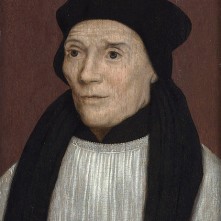


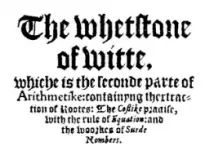
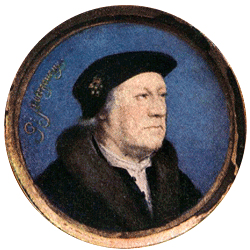
Leave a Reply